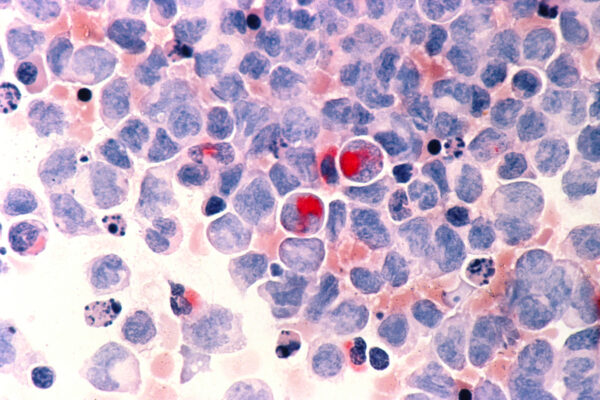Redefining Patient Care: Three Ways to Combat Physician Burnout with Clinical Decision Support
The following is a guest article by McKinley Glover, IV, MD, MHS, Vice President, Clinical Decision Support at Optum Insight After spending nearly 20 years in healthcare, I’ve seen firsthand the surge in clinician burnout, driven by workforce shortages and administrative tasks. By 2037, the United States is projected to experience a shortage of 124,000 […]

The following is a guest article by McKinley Glover, IV, MD, MHS, Vice President, Clinical Decision Support at Optum Insight
After spending nearly 20 years in healthcare, I’ve seen firsthand the surge in clinician burnout, driven by workforce shortages and administrative tasks. By 2037, the United States is projected to experience a shortage of 124,000 physicians.
Clinicians are estimated to spend up to 28 hours per week on work that takes them away from direct patient care. Primary care providers are particularly impacted by this dynamic, spending a staggering 60% of their time on non-patient-facing tasks such as managing electronic health records (EHRs) and paperwork. The growing demands of administrative duties result in physicians working after hours, leading to higher burnout and reduced job satisfaction. In fact, 23% are considering leaving the profession due to these stressors.
Healthcare is on the brink of a major transformation. Providers want to practice medicine effectively, and patients seek timely and efficient care. We are witnessing a significant shift toward value-based care models, a promising step to restore workforce balance and ensure providers and patients thrive in a more efficient and supportive healthcare environment. By focusing on preventative care, quality, and outcomes, value-based care minimizes redundant responsibilities associated with fee-for-service models. We need to equip providers with advanced clinical decision support tools (CDS) to help them deliver the best possible care.
Three key approaches are enabling clinicians to dedicate more time to patients and improve the healthcare experience.
Streamlining Healthcare Operations Through AI-Enabled Automation
Many physicians identify artificial intelligence (AI) as a tool to improve work efficiency and reduce stress. As AI becomes more integral in healthcare, it has the ability to drive improvements by delivering information to clinicians to support diagnosis and treatment recommendations.
Advancements in ambient listening and real-time documentation are making a big impact. In a recent survey on AI adoption in health care, 36% of respondents identified transcribing patient notes as the most valuable application.
Providers are also using AI and automation to extract real-time clinical data from EHRs, eliminating the need to search through extensive data to find relevant information. This patient-specific clinical information enhances the ability to leverage evidence-based practices to improve shared decision-making. A study found that AI-based EHR systems reduced the time clinicians spent on data retrieval by 30%, allowing them to focus more on patient care.
As AI continues to gain momentum in healthcare, operations is one area where we’re seeing progress, with 85% of healthcare leaders exploring generative AI capabilities to improve operations.
To deliver quality care amid increasingly complex patient conditions, we should use AI equitably and responsibly. It should inform, not replace, clinical decision-making, patient autonomy, and the provider-patient relationships.
Managing Chronic Conditions with Evidence-Based Decision Support
Staying up to date with the latest medical guidelines and effectively integrating this knowledge into practice can be challenging for healthcare providers. Over the past decade, approximately 500 new therapies were approved by the FDA, and there are now over 20,000 total drug therapies available. In addition to understanding current recommendations, identifying patients who could benefit from optimized medication regimens and supporting them in adhering to their prescriptions makes delivering best-practice care incredibly complex.
CDS tools help physicians stay current with clinical practices and navigate the ever-evolving landscape of diagnostic and therapeutic options. These systems integrate vast amounts of data and provide evidence-based, real-time recommendations at the point of care. For example, they can alert providers to patient-specific opportunities to optimize therapy based on the latest research and guidelines. CDS has been shown to reduce prescription errors by up to 55%, ensuring physicians make safer and more effective choices for their patients.
They also enable the identification of at-risk populations and support chronic disease management by optimizing treatment plans for patients with multiple conditions. An estimated 129 million Americans have at least one major chronic disease and the numbers continue to rise. The complexity of chronic care management further underscores the need for standardized protocols and evidence-based clinical tools to manage care transitions, monitor patient adherence, and optimize treatment plans. Overcoming these challenges is critical to improving patient care and reducing health disparities.
Improving the Healthcare Experience with Value-Based Care and Payer-Provider Collaboration
The Centers for Medicare & Medicaid Services aims to have all Medicare fee-for-service beneficiaries and the vast majority of Medicaid beneficiaries in value-based care relationships by 2030.
In recent years, nearly 60% of healthcare reimbursements have been linked to quality or value. In a value-based care model, clinicians are incentivized to prioritize preventive care and manage chronic diseases effectively. This approach leads to better patient experiences and improved health outcomes. Meanwhile, payers can better control costs and drive affordability for their members.
As we shift from fee-for-service to value-based care models, we need to build a system with better collaboration between payers and providers. By working together, we can better align on incentives and share data to support the development of the next generation of advanced clinical decision support tools. This collaboration requires real-time data exchanges and robust IT systems that create a seamless experience for providers that drives adoption of these new technologies. Ultimately, these advanced CDS tools provide a more holistic view of the patient’s healthcare journey, enabling the development of optimized treatment plans while reducing administrative burden from activities such as prior authorizations.
We should embrace these tools to drive the healthcare landscape toward more sustainable, patient-centered care. This approach ensures resources are used efficiently and care is delivered effectively, enabling a more affordable and connected system for all.
 About McKinley Glover
About McKinley Glover
McKinley Glover, IV, MD, MHS, is the vice president of clinical decision support at Optum Insight. He also serves as an assistant professor of radiology at Harvard Medical School and is an attending physician at Massachusetts General Hospital. In his current role at Optum, Dr. Glover leads strategies aimed at enabling patient-facing providers with real-time data and clinical content to enhance clinical decision making to improve the quality and cost of care.





























































































.jpg)

























































